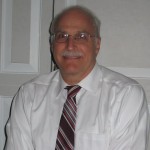HHO – not combustion & maybe not hydrogen
March 24, 2011 | by Jeane
Returned this week from a conference at the University of Maryland co-sponsored by Tom Valone’s Integrity Research Institute. Moray King, in photo, presented his potentially world-changing hypothesis — and new ideas for testing it.
You may have heard about water-as-fuel, or HHO, also known as “Brown’s Gas”, “hydroxy” etc. Engineer/author King has been tying together what is known about it. While hobbyists worldwide are doing water electrolysis to make that gas, a few university scientists are analyzing it. The energetic anomalies that happen when it’s used are well-known, such as a cool-to-touch welding torch flame that vaporizes tungsten and transmutes elements. Small amounts of the gas boost cars’ gasoline mileage, and we hear reports of a few generators running as “closed-loop” systems – even running 100 per cent on that unusual gas made in an electrolyzer powered only by the generator.
The skeptics may be right in saying that a hydrogen-based system couldn’t do what the experimenters are claiming. However, maybe hydrogen isn’t the source of excess energy, King says. Those scientific analyses indicate that the most energetically successful “HHO” gas contains hardly any hydrogen!
King’s new idea about the source of excess energy and how to maximize its flow was proposed at the 2011 Conference on Future Energy. In his paper “Water Electrolyzers and Zero-Point Energy”, he said the HHO community may have inadvertently discovered a surprisingly simple way to tap into the background energy found everywhere. Creating the maximum turbulence in water may be a way to tap it.
Most HHO investigators believe the energy output is from burning hydrogen. To the contrary, King suggests the dominant energy comes from “charged water gas clusters which activate and coherently trap zero-point energy.” Pre-conditioning the apparatus’ electrodes, smaller gaps between them, pulsing a certain electromagnetic waveform, and rapidly circulating or vibrating the water to make turbulence probably multiplies the creation of those clusters.
When both hobbyists and academics understand what seems to be a new form of water, they can design super-efficient water-as-fuel devices. King’s idea, invoking images of electrostatic-rubbing energizing droplets of water — think the dynamics in a thundercloud — may be the key.
Moray King has given his PowerPoint presentation to Sterling Allan to
post on the PESwiki.com website. I see that as an exemplary sharing of
information. Experimenters can read King’s suggestions and then try
variations of their experiments. Maybe they won’t need any electrolyte.
In a conversation after his talk, Moray said they might want to try
using only a “smidgen” of electrolyte. Maybe try incorporating a mesh of
fine copper wire into some new design for an electrolyzer. Feeding the
water in from the bottom of the electrolyzer’s plates would improve the
circulation of water, he says.
”You want the maximum turbulence.”
What has slowed progress in the water-fuel scene? “The problem is the belief that they’re making hydrogen,” King says. A change in thinking could result in “a stampede of garage inventors” creating useful technologies. If the universities don’t lead the charge, then at least they can follow – with the careful studies that will eventually give the academic seal of approval to a new body of science – and game-changing clean energy technologies.
Then the mainstream pundits can look up Moray King to find out the source of excess energy and learn that zero-point energy, or the background energy of the universe by whatever name is settled upon, is always with us. It’s even acknowledged in peer-reviewed physics journals but only in the cautious tunnel-vision limited way that doesn’t talk about doing serious work with it. It’s time to admit to the possibilities for replacing polluting fuels!
Originally published: http://changingpower.net/articles/hho-not-combustion-maybe-not-hydrogen/
PESN.com Copyright © 2002-2010, PES Network Inc.
